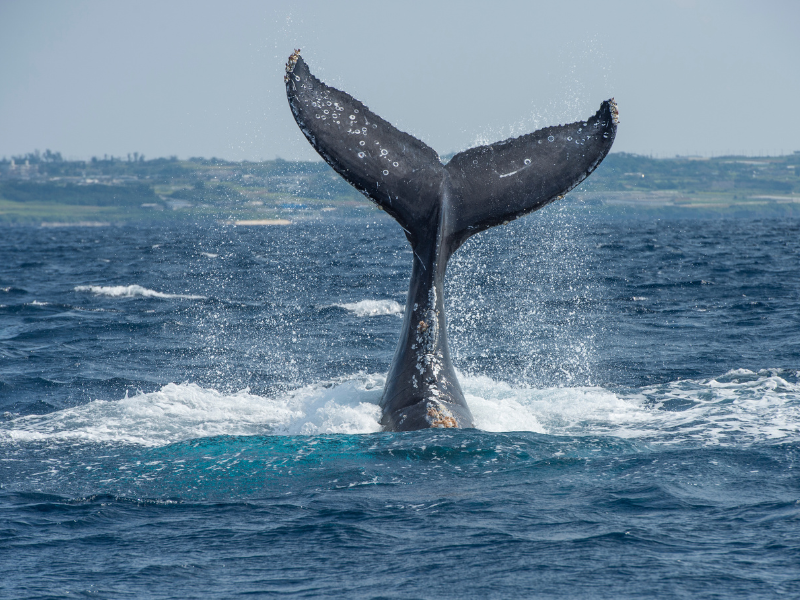More than six decades of painstaking conservation efforts that have brought the majestic whooping crane back from the brink of extinction may come undone because of the proliferation of wind farms in the United States.
Turbines in Flight Corridors
This fall an estimated 266 whooping cranes, up from just six in 1941, made the 2,400-mile journey from Wood Buffalo National Park in northern Canada to their winter quarters in the Aransas National Wildlife Refuge near Corpus Christi, Texas. In spring the giant white birds will migrate back north.
Their flight path takes them over states that have become prime locations for wind farms, a fast-growing, heavily subsidized source of renewable energy.
“We feel that proper siting is the vital part of wind power development regarding whooping cranes and other bird species,” said Ron Klataske, a wildlife biologist and executive director of Audubon of Kansas. “We prefer that wind turbines be placed on already developed and cultivated lands rather than undeveloped prairie lands, of which we have little left.
“If wind turbines are located close to major stopover areas and critical habitat, I would think that some substantial perimeter around those areas should be off-limits for large complexes,” said Klataske. “That doesn’t necessarily mean that some small community project or some landowner’s wind turbine couldn’t be accommodated, but larger projects with 50-plus turbines could be disastrous.”
Deceptively Dangerous
Though wind power supplies the United States with barely 1 percent of its electricity, the number of wind turbines dotting the American landscape has grown exponentially in recent years. That poses a problem for the migrating whooping cranes.
The birds fly during the day and do so at heights, between 500 and 5,000 feet, well out of the way of the rotating blades found on wind turbines. But at night, the birds land in search of food and rest.
During the landings at dusk and the takeoffs at dawn, the birds run the risk of flying directly into the deadly blades.
“These birds are sometimes flying when it’s cloudy, foggy, and rainy, and that could magnify the potential harm that these structures present,” Klataske explained.
“The blades are deceptive in their speed. If the wind is blowing 30 miles per hour, the tips of those blades may be going at 150 miles per hour. They don’t look like they are going that fast, and this deceives birds and bats,” Klataske added.
Few Wild Cranes
Standing five feet tall, with a wing span of seven feet, the whooping crane is among the world’s rarest birds. As of September 2008 the total population of wild whooping cranes numbered 387 worldwide (the species is exclusive to North America), with cranes in captivity numbering 152, bringing the total population to 539.
The cranes that spend the winter on the Texas Gulf Coast are part of the only self-sustaining flock of whooping cranes in the United States.
If current trends hold, whooping cranes, together with other birds and bats, will have to cope with plenty more of the potentially deadly rotors. The U.S. Fish & Wildlife Service estimates up to 40,000 turbines will be constructed in the 200-mile-wide migration corridor that stretches south from the Dakotas through Nebraska, Kansas, Oklahoma, and Texas.
Even in the windswept Great Plains, analysts note, it takes an extraordinary number of turbines to produce even a relatively small amount of electricity.
Need for Caution
Untold thousands of birds and bats are killed annually by wind farms worldwide. To date, no whooping cranes have fallen victim to the turbines, but as wind farms proliferate in the cranes’ migration corridor, deadly collisions appear inevitable.
Whooping cranes are protected by the Endangered Species Act and the Migratory Bird Treaty, but neither document was created with the unintended consequences of wind power in mind.
“The largest factor resulting in the mortality of whooping cranes during their migration is power lines. Large complexes of wind turbines could have similar disastrous consequences,” Klataske observed.
“In Kansas we have lots of places where industrial wind power can be constructed with very little impact on wildlife, but in other places it would be devastating to the landscape and to species …” said Klataske.
Bonner R. Cohen, Ph.D. ([email protected]) is a senior fellow at the National Center for Public Policy Research in Washington, DC.




